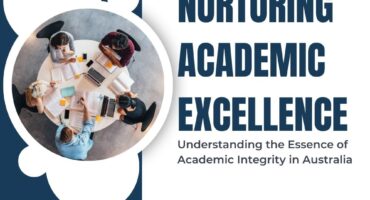Comparative Analysis of Two Youth Work Settings
Introduction
There has been a rapid growth in the incorporation of young people in various organizations across the world. Numerous companies have developed talent-hunt programmes as part of their recruitment strategies. They aim to hire individuals who are in their youths to acquire and nurture their work skills and competencies. According to the report published by Evrard and Bergstein (2016), ‘youth’ is the transition from childhood’s dependence to adulthood’s independence. The shift towards independence creates the opportunity for organizations to develop different work settings for young people before recruiting them. In this regard, the current report will discuss and analyse two typical youthwork-settings employed by real-world organizations. The discussion and analysis will be followed by the identification of key lessons acquired from the two youth work settings and their significance inn strengthening youth worker identity.
Youth Work Setting Profiles
Organizations have developed different work setting profiles for the youth to nurture talent and acquire useful skills. For evaluating the youth setting profiles of the present study, the following organizations have been selected:
AIESEC International
Formerly known as the Association Internationale des Étudiants en Sciences Économiques et Commerciales (AIESEC), the name of the organization is now taken after the French acronym AIESEC. The company is headquartered in the Canadian city of Montreal. AIESEC is an independent and not-for-profit company that is not affiliated with any political organization (AIESEC, 2020a). It comprises of students and fresh graduates who have just finished their higher education studies from various educational institutions around the world. Founded in 1948 in seven European nations, the organization has more than 41 thousand members at present, who are operating in more than 126 countries across the world (AIESEC, 2020a). AIESEC has transformed into a worldwide platform to discover, identify and develop leadership skills and potential in young people. The young individuals of the organization, known as AIESECers, also possess a great deal of passion and enthusiasm regarding global issues, cultural acknowledgement and experience-based learning (Williamson and Basarab, 2019). One of the most beneficial aspects of its operations is that the organization does not discriminate young people under gender, ethnic, religious and social grounds.
AISESEC aims to attain world peace and fulfil the untapped potential of the planet’s young inhabitants. Striving together for peace does not only mean avoiding hostilities and wars, but it also means to mitigate all the conflicts that arise due to religious, social, cultural and other differentiating aspects of humanity (Velez, 2015). The recognition and utilization of human potential is coherently interlinked with the drive for a peaceful global society where people can live in harmony and respect their religious, cultural and social differences. AIESEC’s goal to identify human potential at an early age and foster it is a true indicator of the organization’s leadership development goals.
AIESEC’s organizational structure follows a hierarchical system where the Global President appoints and monitors the work of National Presidents. The local Vice Presidents are accountable to the National Presidents. The Vice Presidents work in various departments that range from talent management to business development, as depicted in Figure 1. These Vice Presidents have separate teams to run the operations in different local regions.

Figure 1: AIESEC’s hierarchical organization structure (Source: Velez, 2015)
AIESEC places a great deal of confidence in its young members to foresee a bright future because they are the upcoming generation of leadership. Leadership development is realized through worldwide internships, volunteering programmes and opportunities within the organization. AIESEC has managed to facilitate more than 5,000 internships across the world by collaborating with emerging ventures as well as multi-national corporations. AIESEC offers three different Exchange Programmes to accomplish its organizational objectives (Velez, 2015). The Global Volunteer programme offers 6-8 opportunities for young people to volunteer in multicultural projects around the world. These international projects are an integral part of the organization’s Sustainable Development Goal that further entails educational and partnership initiatives. Secondly, AIESEC’s Global Teach programme is a teaching placement in which young people are paid to teach in various countries across the globe for 3-12 months. As a result, leadership and communications skills are developed in young individuals. Lastly, the Global Entrepreneur programme provides internship opportunities to business graduates and undergraduates in start-up ventures around the world. The programme is aimed at equipping young entrepreneurial minds with the necessary skills to compete in a dynamic and ever-evolving business environment. Moreover, AIESEC’s innovative Leadership Development Model is an effective preparation tool for the youth to realize their potential and make a difference in their everyday lives through responsible and selfless actions (AIESEC, 2020b). The model comprises of three parts, namely, The Leadership Qualities, The Inner and Outer Journey, and Standard and Specifications. The Leadership Qualities entail World Citizen, Self-awareness, Empowering Others, and Solution-Oriented mindset. The Inner and Outer Journey is a framework provided by AIESEC to enable experience-based learning for its young individuals. Standards and Specifications are the essential activities that must be implemented for the proper execution of the Inner and Outer Journey.
Read More
Furthermore, AIESEC’s Exchange Programme policies are developed to impart self-awareness, solution-driven approach and empowerment amongst the youth. The Exchange Programmes are not considered as opportunities for the participants to earn money, enjoy a holiday or act as a permanent holder of a leadership position of an organization (AIESEC, 2020c). Instead, these programmes comply with the underlying cross-cultural policies by providing a fine exposure of the social and cultural environments in numerous countries around the world, such as Brazil, Austria, Egypt, Colombia, India and Taiwan. The participating members can not only develop practical leadership competencies, but they can also apply them in their roles within AIESEC or any other organization.
International Youth Foundation
The International Youth Foundation was established in 1990 and currently operates in more than 100 countries across the seven continents of the world. With an extensive partnership network, IYF has collaborated with over 600 firms to strengthen and expand youth development at local and foreign levels (International Youth Foundation, 2020a). IYF was founded to guide and train the youth through collaborative efforts. In this way, the young generation can be empowered to lead successful lives. For IYF, shared vision and collective efforts are the core of the organization’s success. The company has facilitated young individuals in more than 100 countries by developing accessible local programmes (International Youth Foundation, 2020b). These initiatives have been organized in various countries, such as Mexico, Uruguay, Uganda and Morocco. IYF has adopted a systematic and holistic approach to form a combination of entrepreneurial, vocational and technical training to young people. In this way, the youth can become an integral part of the workforce and can bring about change in society.
IYF’s business operations are driven around three interlinked strategic goals. The first objective is termed as the ‘youth agency’ that corresponds to the ability and willingness of young individuals to drive change and make decisions (International Youth Foundation, 2020c). Youth agency focusses on the significance of belief and confidence amongst young people. It develops zest in a manner that these young individuals can work collaboratively with one another and can comprehend the opportunities as well as the challenges around them. Youth agency goal aims to discover problem-solvers who can shape their future. Another goal of IYF is to provide equal opportunity to young people as not all of them have the required resources to unlock their full potential and transform their lives (International Youth Foundation, 2020c). Therefore, IYF strives for ensuring that young individuals can access education, career mentoring, training, and relevant connections to nurture their skills. In this regard, the Passport to Success initiative taken by IYF provides offers training of life skills to prepare young individuals for life and work challenges (Passport to Success, 2020). The organization has refined its approach by aligning their programmes according to the market demands. Lastly, IYF’s business operations are also centred around a systematic change in local communities (International Youth Foundation, 2020c). The organization has a firm belief that young men and women of the world cannot realize their true potential if the surrounding educational institutions and labour markets are unresponsive to their needs and aspirations. Therefore, IYF seeks to make incremental changes to align the approaches and interests of educational and labour market with the ambitions of young people.
IYF’s business objectives underpin the crucial policies that have been developed for promoting social inclusion and gender equality. The Gender Equality and Social Inclusion (GESI) policy has played a critical role in prioritizing the expertise and skills of IYF’s local partners and staff (International Youth Foundation, 2020d). It is to ensure that the programmes organized by IYF do not halt the drive to achieve fair and reasonable outcomes. Moreover, IYF’s partnership with different stakeholders, employers and other companies has proved pivotal in the implementation of the organization’s GESI policy. Furthermore, IYF is strictly following safety, anti-harassment, child protection, anti-discrimination and code of ethics policies to ensure three positive outcomes (International Youth Foundation, 2018). Firstly, these policies are designed to ensure that young people get equal access to the opportunities in projects that are conducted by IYF. Additional support such as multiple training sessions, stipends and childcare support for young parents is provided to ensure fair social inclusion. Secondly, these policies are also fashioned to accomplish equal outcomes that allow participants to see similar outcomes of IYF projects. In this way, projects organized for attaining equal outcomes can direct the resources to young individuals. These young people may require additional support to achieve a result that is similar to the results of other participating members. Lastly, these policies are aimed at transforming work environments by improving social inclusion and equity in a broader context. Projects organized by IYF can challenge the norms, customs, rules and beliefs of a society. However, special care is taken to ensure that respect and dignity of every individual is not compromised at any cost.
Comparative Analysis
AIESEC and IYF are organizations that have incorporated youth work settings to enhance the skills and work competencies of young people around the world. The two organizations share similar exposure to the world as they operate in more than 100 countries that are distributed over the seven continents of the world. As a result, these organizations have been able to work with sponsors and other stakeholder firms to empower young people. However, AIESEC and IYF have contrasting objectives that are accomplished through various approaches and strategies. While AIESEC aims to develop leadership skills and impart cultural empowerment amongst its young participants, the goal of IYF is to develop the overall skills and work competencies of young people through extensive collaborative efforts with multi-national firms. Although AIESEC also partners other organizations to develop leadership development programmes and initiatives, IYF’s collaborative networks with other companies play a relatively central role in achieving the organizational objectives. Moreover, AIESEC provides leadership development for young people through its three exchange programmes that encompass volunteering, teaching placements and entrepreneurial internships. On the other hand, IYF enhances work-related skills of young individuals through different initiatives all around the world. The Passport to Success initiative is taken in more than 50 nations (International Youth Foundation, 2020e). The YouthActionNet has strengthened youth-led social start-ups in 92 countries (International Youth Foundation, 2020f). IYF’s collaboration with Microsoft to enhance digital skills and learning of young people has had a positive impact in 20 countries (International Youth Foundation, 2020g). Furthermore, the basis of youth work settings in AIESEC and IYF is different for the two organizations. AIESEC’s work setting for young people is based on the Leadership Development Model that is powered by three fundamental parts. In contrast, IYF’s youth work setting is drawn by several strengths that are reinforced by the concepts of sustainability, scalability and effectiveness. AIESEC’s emphasis on developing leadership traits, experience-based learning, and standards and specifications is the fundamental pillar of the organization’s business operations. Meanwhile, IYF’s operational and technical expertise, global and local outlook, strengthened local capacity, stakeholder alliances and the drive for youth empowerment in research publications are the vital governing factors of the company’s business operations (International Youth Foundation, 2020h). Regardless of the resemblances and differences in the youth work settings of AIESEC and IYF, both the organizations have managed to improve youth skills effectively.
Key Lessons
The discussion and comparative analysis of the youth work settings in AIESEC and IYF reveals two significant lessons. Firstly, youth empowerment and development of youth skills cannot be accomplished in any organization without the proper implementation of policies concerned with gender diversity and equality, cultural acknowledgement and respect, and ethical codes of conduct. Secondly, the ever-evolving dynamics of the world’s labour market and business environment has established the fact that productive youth work settings can only be developed through effective collaboration of stakeholder organizations. These two lessons are linked to one another in a manner that the successful implementation of any one of them is insufficient to accomplish the goals of youth development and empowerment. The identity of youth workers can only be bolstered when organizations design and implement gender equality and ethically-oriented policies, together with effective collaboration and partnership with other organizations that share similar policies and interests.











